|
Yes, I know … I often talk about not having a lot of memorabilia. But when something is given to you out of the blue, does that count as memorabilia – or as a treasured keepsake? One of my roughest years in baseball was 1994. It wasn’t just a rough year for me and the Cubs; it was a rough year for the whole sport. The Cubs weren’t very good – note to self: going winless at home in April is not cause for celebration – and a work stoppage was looming. Quite honestly, by the time the season came to a screeching halt in August, it was time for a mental break. If you recall, the 1993 club was fairly decent and finished over .500 at 84-78. Once baseball resumed in 1995, that Cubs team went 74-70 and was in the wildcard race until the last few days of the campaign. But the 1994 season just plain old stunk. At times, it seemed as if people didn’t want to be there. And then, one day, completely out of the blue, one person wasn’t going to be there anymore. That date was June 13 – an off-day before a West Coast road trip. At that point in the season, the club was 23-37 and in last place in the N.L. Central – 11.5 games out of first. I can assure you, things weren’t going to get better the rest of that year. There was a weird vibe in the building that morning; something didn’t feel quite right. Then the word trickled down to the Media Relations department … Ryne Sandberg was announcing his retirement. Sandberg was only 34. True, he was struggling that season, but he’d been an All-Star in each of his previous 10 campaigns. He had won nine Gold Gloves. He had seven Silver Sluggers. For crying out loud, he was still Ryne Sandberg. Like everyone else, I was stunned. But there was no time to go through the motions. My routine the day the team was leaving to go out of town – and I wasn’t on a trip – included going to the clubhouse … saying Hi to the manager and coaches and checking in to see if there was anything they needed before heading on the road … saying Hi to the training staff … and getting the game notes done for the following day. So I walked down to the Cubs clubhouse – and I was told Sandberg was already there in the training room. I walked in, and there he was – just talking and acting as if everything was normal. I gave him a “hello” head nod and started to leave the training room. He said something to the effect of, “Hey. Hold on.” Ryne followed me out of the training room. He asked me if I knew what was going on. I had no choice. I answered “Yes and No.” He knew what I meant. Ryne didn’t explain everything, but he told me he needed to retire for family reasons. Over the course of time, we all learned out what that meant. He also said to come see him after the announcement; he had something for me. I wasn’t thinking memorabilia or anything like that. I was figuring he had something that needed to be returned upstairs. Actually, I wasn’t thinking much at all; I hadn’t mentally planned for a day without Ryne Sandberg on the team. The next couple hours were an absolute blur. Press conference. One-on-one interviews. Constant thoughts transcribed on the back of the press release for notes ideas – as this was someone retiring who was someday heading to Cooperstown. After the press conference, I walked back downstairs to a quiet home clubhouse. Ryne was going through some things in his locker. I wandered over to him to thank him for everything, and he handed me a brown shopping bag – rolled over multiple times at the top. “Open this later on,” he said to me. I made it all the way back to my desk before curiosity got the best of me. Inside the brown paper bag was a Rawlings glove – with the red Rawlings label surrounded by a gold band. On the side of the glove, a message simply read: To Chuck, Thanks for everything. Ryne Sandberg 6/13/94 I didn’t know what to say. I still couldn’t believe it was over. Thankfully, it wasn’t totally over; he did return to play in 1996 and 1997. And when he announced in August 1997 that he was going to retire at the end of that season, it somehow felt right this time. I do look at that Rawlings Glove all the time. I can’t help it; it sits atop the living room TV. While the writing on the glove is faded now, his legacy as the best overall second baseman I’ve ever seen remains as strong as ever.
1 Comment
Has anyone seen the picture of me and ZZ Top? Apparently, by asking that question in the form of a story, the glorious answer was “Yes.” Late last week, I wrote of my longing for a missing photo I took with Billy Gibbons and Dusty Hill of ZZ Top back in the early 1990s. I’m 99-percent positive that framed photo is around the house somewhere, but its whereabouts have been a complete mystery to me. While I don’t know where the original is hiding, at least I can now share a copy of it. In what can also best be described as a mystery, for some unknown reason over the 16-plus years I’ve lived in this house, that photo – at least for a few moments – matriculated across the street. On top of that, for some other unknown reason, which I can only assume to be the awesomeness of the photo, my neighbor had the photograph on her kitchen counter and snapped a picture of my picture. Thanks to the storage capabilities of her iPhone, I have some of my memories back. Anyway, about an hour after posting that story and doing the social media thing via Facebook and Twitter, I received a text from my neighbor. It read: “I’m not exactly sure why … ” Attached to the text was the picture of yours truly sitting in the Wrigley Field third-base dugout being sandwiched by Gibbons and Hill. When I clicked on the attachment, it was like hearing angels singing – except they were singing “Sharp Dressed Man.” After I moved the photo over to my computer to (hopefully) save it for posterity, I couldn’t help but laugh. As I had written in the previous story: “It was a great photo – a smiling me with my two-inch thick glasses sandwiched between two guys in big black cowboy hats and indescribably long beards. There’s no other way to put it … I was super-nerd between two super-cool musicians.” Now, from a jury duty perspective, the picture clearly shows no big black cowboy hats. Epic fail on my part. In fact, I think the hats they’re wearing can now best be described as the headwear found on the scalps of baseball scouts on a field near you. But the beards are long – tell me how to describe the length other than indescribably long – and trust me, my glasses were thick. I indeed was super-nerd between two super-cool musicians. I publicly would like to thank my neighbor – THANK YOU! – but I’m maintaining her privacy and not mentioning the name. If she had this picture on her phone, I do wonder what other photos she might have on me. That makes for a whole different story. If a picture is worth 1,000 words, how many words does it take to write about a picture that you can’t find?
Not quite 1,000, I can assure you. I’m guessing somewhere in the 750 range. During my time with the Cubs – especially during my media relations days – I didn’t collect a ton of memorabilia. For some reason, I painted some high-and-mighty “professional decorum” label on myself. Sure, I have a few photos and some autographs, but I don’t have a museum to display. The further removed I am from my time with the Cubs, though, I wish I hadn’t held myself up to that exacting standard. I realize most items you acquire go on to become clutter, but it would be nice to have a few more mementos of my time at Clark and Addison streets. Some would be fun just to show off to my kids. Some would definitely be worth sharing with all of you. And most importantly, some would be great story fodder – especially if it was artwork that could supplement the narrative. I wish I had pictures of myself with Harry Caray … or Ernie Banks … or Ron Santo … or Jack Brickhouse. Too late for that. I wish I had pictures of myself with some of the celebrities I crossed paths with over the years, like Billy Crystal and Gregory Hines and Bill Murray and Charlie Sheen and a host of others. Nope, I didn’t do the fanboy thing. Granted, I do have some photos with some Sports Illustrated swimsuit models. Maybe I’ll trot out those beauty and the beast pictures at some point (by beast, I’m referring to me). But … do you know what’s worse than not having physical memorabilia? Breaking down, asking to take a picture, knowing you have possession of the photo, and then not being able to find it. Aargh. The exact year is sketchy, but I know it was in the early 1990s. This one morning before batting practice, a member of the Cubs’ marketing department told me that she was going to be escorting ZZ Top around. If I wanted to meet the band members, stop by the dugout during BP. I couldn’t have gotten through my early years in college without MTV; growing up inside Chicago city limits, I had never actually had cable TV before I went away to college. And one of my favorite MTV groups was ZZ Top. I know it’s supposed to be about the music and not the videos, but think about those songs: “Legs” … “Sharp Dressed Man” … “Gimme All Your Lovin’.” I’d still watch those videos today if I knew how to work the TV remotes at home. Thinking about those guys in cowboy hats and long 12-inch beards. I still can’t just listen to “Cheap Sunglasses,” as my kids constantly get on me whenever I sing anything from the ’80s. “When you get up in the morning and the light is hurt your head The first thing you do when you get up out of bed Is hit that streets a-runnin' and try to beat the masses And go get yourself some cheap sunglasses” As it turned out, the two bearded members of ZZ Top – Dusty Hill and Billy Gibbons – were indeed at Wrigley Field that particular day. Both were very friendly. Both stayed out of the way, opting to watch batting practice from the dugout. I broke my vow and approached them, asking if it would be OK to take a picture with them. Of course, they agreed – and team photographer Steve Green took a picture of me with Hill and Gibbons. It was a great photo – a smiling me with my two-inch thick glasses sandwiched between two guys in big black cowboy hats and indescribably long beards. There’s no other way to put it … I was super-nerd between two super-cool musicians. That photo went on to infamy as the centerpiece of the Cubs’ holiday party slide show – with the emcee (I won’t sell him out) making some reference about my spending a Saturday morning sitting with a pair of Hassidic rabbis. Heck, it was a funny line! And if I had the picture to show you, you’d find it funny, too. It’s been roughly 25 years since that photo was taken, and I wish I knew where it was. I know I had a framed copy of it back in my apartment days, but it’s whereabouts these days are unknown. Hopefully one of these days that photo will magically reappear. And if it does, I'll surely share it. Ironically, I’m fighting a cold right now, but I couldn’t resist a little self-deprecation. Here’s my little story of a game of catch – or lack thereof – on the hallowed grounds of Wrigley Field. I need to let you in on a little secret: I never was a good athlete. Just because I wasn’t a good athlete didn’t mean I wasn’t a wannabe. I loved playing baseball as a kid. I loved playing running bases either in our backyard or with the neighbors up the street. I loved playing fast-pitch behind Rogers School … or Boone School … or Clinton School. I couldn’t get enough of the game during the summer. But I just wasn’t a good athlete. My parents may argue with me over that, but my wife and kids will nod their collective heads in agreement. I made it through 99.999 percent of my Cubs career being an observer and not a participant. For me, sweating at work meant I was frantically running around because the club was about to make an announcement – or it was hot outside. But that other 0.001 percent is the day I played the faux athlete role. It was a day that lives in infamy. Hopefully, you weren’t there to witness it. It’s the day Bob Patterson made me play catch with him. Patterson was a southpaw relief specialist for the Cubs from 1996-1998. The left-handedness gave us a natural bond. He was a “late in life” guy by baseball standards; he had his best big league success – and saw his most extensive action – at ages 37 and 38. He was a fun guy to talk to, and he always had something interesting to say. This one Sunday morning in Chicago, Patterson and yours truly were sitting in the Wrigley Field dugout just shooting the breeze. There was no batting practice that day, and players were strolling into the ballpark at no great rate of speed. Patterson was getting antsy; he had been on a roll of late, and he wanted to stay in a routine and play catch. He politely excused himself to go into the clubhouse to grab a teammate to throw with him. About 90 seconds later, he returned to the dugout – alone. And he had two gloves with him. At first, I didn’t think anything of it. Patterson was known as “The Glove Doctor” – and was a regular fixture on TV, sitting in the bullpen and working to repair someone’s glove. This time, though, he tossed the second glove to me. “Lefty, correct,” he said. “Let’s go.” And he was serious. He was getting loose, and I was going to play the part of guinea pig. I followed him down the third base line to the Cubs’ bullpen, and for the first few minutes, it was actually a routine game of toss. Picture this: Patterson, the crafty veteran, in his white uniform with blue pinstripes. Wasserstrom, now sweating profusely, in a collared shirt and khakis. I did my best to not notice that the gates had now opened and fans were strolling into the park. Just catch the ball. Just get the ball back to him. Don’t do anything stupid. I thought I was going to get through it unscathed. But as I’m well aware … don’t think; you can only hurt the ball club. Just when I thought I could relax, Patterson threw his “out” pitch in my direction – which was some hybrid combination of screwball and changeup. It was like a mad butterfly was coming my way. No, I didn’t duck. Worse … I whiffed. The ball totally missed my glove. I’m not sure I was within a foot of catching it. I don’t think I could have smothered it. The ball rolled all the way to the leftfield corner, and fans by the bullpen snickered. After retrieving the ball and somehow getting it back to him without tearing any cartilage, Patterson said he wouldn’t throw that pitch again. But he did. And it wasn’t pretty. I reached and whiffed again. I didn’t even jog to retrieve the ball; I was even getting some boos. I vowed I wouldn’t let another one by me. I dared him to throw another screwball/changeup/ whatever. The third time was the charm, as the ball completely missed my glove again while striking me in the right knee. I took that as a moral victory and quit right there before I damaged my morale anymore. And my playing career officially ended before it started. You have to know your limitations. It was the logical offshoot of my last post about not judging a draft right away.
Actually, it was something I needed to take a little time to research – and accidentally got prodded into doing it by Steve Trachsel (thanks, Trax!). Looking back, I’ve often wondered: What was the best Cubs draft during my time with the club? I was involved in publicizing the club’s draft selections from 1988-2003. I sat in a draft room, or a pre-draft meeting, or represented the team at the draft, from 2004-2011. All-in-all, I was there in some way, shape or form without actually having any input into any of it. In other words, this is a totally unscientific post. I ended my last post by talking about the 1984 draft – which predated me. The Cubs selected Drew Hall with the third overall pick; he did make it to the majors, but with limited success. If you judge a draft by the achievements of the first-round pick, that draft wouldn’t have turned out very well. However, Greg Maddux was selected by the Cubs in the second round and Jamie Moyer was picked in the sixth round. Between the two of them, 48 seasons in the majors and 624 wins. Pretty damn good draft, you’d have to say. Time has shown that there were no Maddux/Moyer combos found in any Cubs draft classes during my time there. But, to quote Mr. Trachsel – who commented on the ending of that story: “1991 wasn't too shabby either.” Trachsel was correct. I took it as a challenge. So … which draft class was the best one during my time there? The Class of ’91 became the early leader. Five of the club’s first eight picks reached the majors. First-rounder Doug Glanville spent nine years in the majors and had two stints with the Cubs. During his second tour of duty with the club in 2003, he had a big game-winning pinch-hit triple in Game 3 of the NLCS. Fourth-round pick Terry Adams spent 11 years in the majors, appearing in 574 games. Fifth-rounder Ozzie Timmons saw big league time in parts of five seasons. And then there were the back-to-back selections of Trachsel in the eighth round and Jon Lieber in the ninth round. Trachsel went on to spend 16 years in the big leagues, winning 143 games – including the wildcard tiebreaker in 1998 that sent the Cubs to the postseason – and had seven double-digit victory seasons. Lieber spent 14 years in the majors, winning 131 games – including a 20-win campaign for the Cubs in 2001. Not too shabby, indeed. There was just one problem. While Lieber was selected in by the Cubs in 1991, he did not sign – electing to return to school for one more year. It turned out to be a good move on his part, as he was chosen by Kansas City in the second round of the 1992 draft. He was later dealt to Pittsburgh, where he spent five seasons before being acquired by the Cubs. So, that kind of puts a red flag on that draft class for me. 1991 definitely became the measuring stick – with five players having substantial big league time and four doing that after being drafted/signed/developed by the organization. As I looked through the ‘90s, I went through the names year-by-year. There were seasons with more players, but lesser substance. There might have been a player here or there who had comparable career numbers to Trachsel and Lieber, but not multiple people coming out of the same draft. I purposely skipped 2001 at first – I knew that was going to be a good draft – and continued on through the next 10 years. Sorry, just didn’t see any classes comparable. And then I looked at the 2001 draft. Truth-be-told, I knew that would be a tough one to beat. Baseball America’s Ultimate Draft Book, published last year, ranked the Cubs’ class as the best in that year’s draft. Quite frankly, it was a solid draft. Mark Prior was picked second overall. We’ll never know what the end result might have been had he not gotten hurt, but the facts are the facts: In 106 major league starts, he went 42-29 with a 3.51 ERA and 757 strikeouts in 657.0 innings. Fourth-rounder Ricky Nolasco is still in the majors – and is in his 12th big league season. Geovany Soto, the 11th-round selection, is now in his 13th big league campaign. Third-rounder Ryan Theriot hit .281 in 899 games. Second-rounder Andy Sisco pitched in 151 games. Fifth-rounder Brendan Harris played in 529. Seventh-rounder Sergio Mitre pitched in 143 big league games. Overall, 13 players selected by the Cubs that year saw big league time – including six who did not sign (topped by Khalil Greene and Tony Sipp). If you count Lieber, the 1991 class wins. If you don’t count him since he didn’t sign with the club, the 2001 class wins. So, I’m still in the same quandary. What was the best Cubs draft during my time with the club? I’ve been very fortunate the past couple of months to talk to some of the best scouting directors in the game for MLB Trade Rumors.
I wrote a series of stories under the header of “Inside The Draft Room” which were lookbacks at some of the better drafts of the past 20 years. Not necessarily the best drafts – that is always a subjective discussion – but definitely some of the better ones. I talked to a couple guys I used to work with – Tim Wilken and Jason McLeod. Sadly, neither was about a particular Cubs draft. With Mr. Wilken, the story was about the 1997 Blue Jays draft. That year, “only” four of Toronto’s picks made it to the majors – but those four players (Vernon Wells, Michael Young, Orlando Hudson and Mark Hendrickson) – had a combined 50 years of big league service time. With Mr. McLeod, the story was about the 2005 Red Sox draft – and a first-time scouting director having five picks between No. 23 and No. 47. All five of those selections, including Jacoby Ellsbury, Clay Buchholz, and Jed Lowrie, made it to the majors. The other scouting directors I spoke to were people I had little-to-no prior contact with – and all were super to talk to. They couldn’t have been nicer. They were honest and forthright and allowed me to tell some great stories. I spoke to Duane Shaffer, whose 1998 White Sox draft included the first four selections getting extensive big league time – and a 38th-rounder in Mark Buehrle who went on to be the best player selected in that year’s draft. And there was a great conversation with Eddie Bane about the 2009 Angels draft – which included Mike Trout as the club’s SECOND first-round selection … at No. 25. That’s right … the best player in the game wasn’t even his own club’s first pick. That, of course, led to a discussion with Tom Allison about the 2009 Diamondbacks draft – since Arizona had two first-round picks that year. The Diamondbacks passed on Trout but did select Paul Goldschmidt in the eighth round. The team had a stellar draft that year, but as revisionist history shows, Trout and Goldschmidt were “thisclose” to being teammates. Of course, if teams knew for sure what Trout and Goldschmidt would become, those two would never have gotten past the first few picks. I talked to Damon Oppenheimer about the Yankees 2006 draft, which included Ian Kennedy and five current big league relievers in Mark Melancon, Dellin Betances, George Kontos, Zach McAllister and Dave Robertson. That bullpen – if kept together – is one most teams would covet. Finally, I spoke to Logan White about the Dodgers 2002-2003 drafts. Those two drafts included a bunch of guys that knocked the Cubs out of the 2008 playoffs – James Loney, Jonathan Broxton, Russell Martin, Chad Billingsley and Matt Kemp. That was reason enough to talk to him. So … what did I learn from all these conversations? I learned the obvious: No matter how much work goes into it, the draft is largely a crapshoot based on the success (or lack thereof) of the No. 1 pick. The baseball draft is not like the NFL draft or the NBA draft. Selected players are not major-league ready. So it’s all about projection. It’s all about acquiring as much information about each player. It’s all about continuous homework. It’s all about following your gut. It’s all about keeping your fingers crossed that the player stays healthy. It’s all about being lucky. During my time with the Cubs, there wasn’t one draft where the scouting director wasn’t excited about the first-round pick. And some of those first-round picks went on to have successful big league careers. More often than not, though, there were a lot of post-draft letdowns. I remember the excitement of selecting U.S. Olympian Ty Griffin in 1988 – my first year writing a draft selection press release – and the sadness when those expectations were never met. And I remember the enthusiasm in thinking we found one in Lance Dickson in 1990 – only to have his career derailed by injuries just months after the draft. And, of course, I remember the joy the day we selected Jon Garland in 1997 – and the quizzical feelings 13 months later when he was traded to the White Sox for Matt Karchner. Karchner was a serviceable reliever; Garland went on to spend 13 years as a major league starter, winning 136 games. There is a reality in all this … a draft cannot be judged right away. And a draft cannot be judged solely on the first-round pick. Case in point: One of the best drafts in Cubs history – if not THE best – took place in 1984. Sadly, scouting director Gordy Goldsberry is long gone; otherwise, I would have interviewed him for the series. The Cubs picked third that year, selecting Drew Hall – who would go on to record a 9-12 record with a 5.21 ERA in parts of five big league seasons. The pessimist would say “Bad draft. That’s the best you could get out of the No. 3 pick?” But you have to look past the first round – since some guy named Greg Maddux was taken in the second round and another guy named Jamie Moyer was picked in the sixth round. Between the two of them, 48 seasons in the majors and 624 wins. I guess you’d say the Cubs had a decent draft that year. 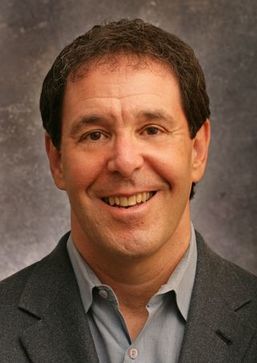 Jayson Stark Jayson Stark It was late July 1988, and I was a 22-year-old kid on my first big league road trip. I was doing everything I could to take it all in, figuratively pinching myself and telling my inner self to play it cool – even though every little experience was so, so cool. I had flown into Philadelphia to meet the Cubs – who were on an extended trek just prior to the first game under the Wrigley Field lights. My purpose, so to speak … I was taking over media relations activities from my boss, Ned Colletti, who then headed back to Chicago to finalize all media-related details prior to the historic unveiling of night baseball at Clark and Addison streets. With all the renovations that have been done in recent years, it’s hard to remember that there used to be a time when all 81 home games were played in sunshine. OK, maybe not sunshine, but definitely without artificial illumination. The Cubs first flew to Montreal en route to Phiadelphia. I then met the team there, overlapping with Ned for a couple games to get a quick tutorial on what you do when you’re on a road trip. I was a true newbie; I had to be shown every strand of the rope on how to do things. After he went back home, I traveled with the team from Philadelphia to Cooperstown to New York. One of Ned’s biggest strengths as the media relations director was that he was a people-person – especially when it came to the newspaper writers. A lot of that came from the fact that he was a former beat writer himself, having covered hockey for a now-defunct newspaper in Philadelphia. Ned taught me right away to say hello and introduce myself to the other team’s beat writers and broadcasters. And since we were in his old stomping grounds of Philadelphia, he made sure to do a lot of intros on my behalf. I still vividly recall, at the door of the Veterans Stadium press box, when Ned introduced me to Jayson Stark of The Philadelphia Inquirer. Even back then, Jayson was a legend to me. He had this great weekly Sunday baseball column chock full of news and notes that you couldn’t easily find in those dark ages – also known as the pre-internet era. Back in those days, Sunday was THE day of the week thanks to his notes column. You never knew what you were going to find, but there was definitely a combination of baseball human interest stories and humor. So here I was … in Philadelphia … with the actual Inquirer in hand … and I was getting the opportunity to shake hands with the person who wrote one of my favorite weekly columns. There’s no other way to say it … I was meeting an idol. Throughout my time with the Cubs – both in media relations and baseball operations – I talked to Jayson hundreds of times. After working in Philadelphia for 21 years, he moved on to ESPN in 2000 – where he was one of the preeminent writers when it came to chasing down rumors and facts. I could always count on hearing from him during key transaction periods like the trade deadline and the Winter Meetings. Most of the time, he asked the questions. It was my job to make sure not to steer him in a wrong direction. At the same time, he had this awesome Rumblings and Grumblings column which became a must-read. For people like me who enjoyed trivia and the stories within the stories, his column was essential reading. He would often call just to check in – and sometimes, I was even able to tip him off to a story idea. Unfortunately, when the ESPN layoffs hit in April, Jayson was one of the people whose services were no longer deemed necessary. I reached out to him then; sadly, I know how that feels. We have talked a few times recently, and Jayson agreed to speak with me for an interview. That conversation was written for MLB Trade Rumors, and you can read the story by clicking here: https://www.mlbtraderumors.com/2017/06/the-glass-is-always-half-full-a-conversation-with-jayson-stark.html. Hopefully one of these years, Jayson will be enshrined in the writers’ wing of the Baseball Hall of Fame in Cooperstown. I hope you’ll check out the interview to learn a little bit more about Jayson and his love affair with the game of baseball. It was an interesting off-shoot of the Joel Murray interviews that I recently did.
In the social media/internet world we live in, you don’t just post a story. You have to do whatever you can to publicize it – and that’s still a really weird feeling for me. But in tweeting about the two stories being posted, I had some unexpected and awesomely interesting names from the acting community appear in my “Likes.” There was Susan Sullivan … who played Kitty Montgomery on Dharma & Greg. There was Jeff B. Davis, one of Joel’s cast mates from the Whose LIVE Anyway? improvisation tour. There was David Pasquesi, who I saw perform at Second City and who has been in numerous movies – including Groundhog Day. There was the coolest name ever – actor/director Bobcat Goldthwait – who showed up in my likes twice! And then, there was Pat Finn, the actor who plays neighbor Bill Norwood on “The Middle” – one of my kids’ favorite shows. A quick internet search showed he was the same age as me … he grew up in Evanston … he was a Cubs fan … and he went to the same high school as Joel Murray. Not only was he in “The Middle,” but he once had a recurring role in a series of Got Milk? commercials. I reached out to Pat to see if he was interested in speaking with me for this site – and it was one of the easiest things I’ve ever done. He was just so … normal. Nothing Hollywood about him. And it turns out we have a few things in common. His wife is from the Springfield area – just like mine. He took Driver’s Ed at Mather High School – my alma mater. I grew up on the Chicago/Evanston/Skokie border – not far from a bottling plant that he worked at growing up so he could make money to help pay for his Marquette University schooling. We talked last week about a variety of subjects – including what it’s like to live in a Chicago sports community in Southern California – but I wanted to share this story. Whenever I tell my kids I’m going to be doing an interview with someone, invariably, one of them tells me to say Hi for them to the person I’m going to be speaking to. I usually roll my eyes … “Yeah, right.” He or she “doesn’t know who you are.” This time seemed different to me. This was one they were quite adamant about. “Tell the guy who plays Bill Norwood we said Hi.” Of course, I wasn’t going to ask the follow-up question, “Is the guy who plays Axl really that dumb?” Pat seemed genuinely excited when I told him my girls knew who he was: “Oh, that's so funny. That's so cool,” he said. “I'll tell you ... coming out here, I've been able to do a bunch of stuff, and there's things that I've turned down or things that I didn't feel were great – especially as a dad. “When I'm on stage, it's rare that I swear. It's funny, I did an episode of ‘Two Broke Girls,’ which was a good gig and fun and they're super nice. But I didn't let my 14-year-old watch it because it's a pretty racy show. “So on the flip of that, one of the creators of ‘The Middle,’ Eileen Hessler is from Deerfield. DeAnn Heline is from Ohio. They're both parents and married and amazing, super great people. I had done a TV show with them and it went really well. So, a couple of years later, ‘The Middle’ popped up and they were like, ‘Hey, we're trying to get you in on this.’ And I'm like, ‘That's great.’ “And then they just kind of wrote a part of a neighbor, which I jumped into. And it seemed like they liked it, so it's gone really well. It's nice to be part of a show that I'm proud of. I think it's a good, clean, funny show, and it's under the radar. “But yeah, tell them I said ‘Hi’ as well. “My daughters are 22 and 20, and then I have a son who's 14. For the last eight years, we'll sit on the couch all together and watch it. Maybe sometimes that happens with the big sporting events, but that type of things doesn't happen with regularity in most families. So it's cool to be able to watch a show like that with your family. “Say ‘Hi' to your twins. That's awesome. I'm so happy that they're fans of the show. Tell them to have a great summer.” It’s not only kids that recognize him. Finn talked about how the father of actor John Krasinski – one of the stars of “The Office” – reacted when he found out his son and Finn were appearing together in the movie “It’s Complicated.” “This is such a Hollywood thing to say … I was working on a movie with John Krasinski, who I'm a big fan of; I think he's great,” Finn said. “We started talking about our families, about basketball and sports. Then he said, ‘Hey man, is there any way I can get a picture?’ “He said, ‘My dad's always like that's cool, that's cool, that's cool' when I tell him who I’m working with. I said I was working with you ...’ I did these commercials a few years for milk where I was in a giant milk carton. John was like, ‘My dad went nuts when he heard I was with you.’ I'm like, ‘Really?’ He goes, ‘Well, Meryl Streep was up there, too.’ I go, ‘So, it's Meryl Streep and the milk carton guy?’ But nevertheless, he was like, ‘Yeah. It was our favorite commercial. We can quote every line.’ That was hilarious.” Finn told some great stories about how the Chicago-born actors tend to gravitate toward each other in Los Angeles. He also told the tale of how he became a youth sports coach. “Gosh, we moved out here about 20 years ago, which seems crazy,” he said. “Moving out here, we really didn't know where to live. I was on a TV show with George Wendt; he's from the south side. And so we'd stay at his house which is in kind of what they call the Valley of L.A. The Valley is ... this kind of big area. And if the Valley seceded, it would be the fourth largest city in the country, that's how big it is. But it's like Santa Monica, Beverly Hills, all that. But the Valley was the most kid-friendly and the most Midwest to my wife and me. “And then we just fell into a Catholic grammar school … it's a great school, and it kind of reminds me of St. Joe's (in Wilmette) where I grew up. There's people that have money, there are people who are scholarship, and everywhere in between, and everybody kind of chips in. “There was a nun that was the principal, so at the open house they were like, ‘It's a waiting list to get in. Blah, blah, blah.’ And I'm like, ‘Shoot, in Chicago you've got connections.’ And here, I don't have any. “So I went up and talked to the nun and she's smiling, and I'm like, ‘Oh, where are you from? I just got back from Kilkenny (Ireland) with the comedy festival.’ And she said, ‘Oh, my best friends were in Kilkenny.’ And we talked about that for a while and she said, ‘What do you have? A son or a daughter?’ I said, ‘I have a daughter right there, Cassidy.’ She goes, ‘Oh, she's the cherubim.’ I said, ‘Yeah, she's great.’ She goes, ‘Oh yeah, you're in.’ ‘But isn't there like a waiting list?’ ‘I like you; you're in.’ And I'm like, ‘Okay, great. That's awesome.’ So it worked out perfect. “And then cut to fifth grade, she calls me in her office. My wife and I were room parents and PTO. She goes, ‘There's nobody to coach the girls.’ I'm like, ‘Oh, okay. What, do you call downtown and they send out a coach or the Archdiocese puts somebody on the bench with them?’ ‘Nope, nope. Somebody's got to volunteer.’ ‘Oh.’ “She said, ‘I was thinking you could do it.’ ‘I could do what?’ ‘I know you; you could play sports.’ ‘Yeah, I could play, but I've never coached girls’ basketball.’ She goes, ‘I'm asking you now.’ And all I thought about was I could have the most perfect life in the world, and then get to heaven and be like, ‘Um, you said no to a nun? Yeah. This isn't the stop. We don't take nun-noers.’ “I ended up coaching and, it was the greatest thing just because I grew up playing a lot of sports. But I think coaching was ... I'm sure my record is horrible at every sport that I coached, but I loved doing it. “My dad used to coach us in hockey. I remember the first time I was coaching girls’ soccer, he said, ‘That's great you're coaching.’ I said, ‘Yeah.’ And he goes, ‘Hey, I've got a question.’ I said, ‘Yeah,’ and he goes, ‘Do you remember the score of any game?’ I said, ‘No, I really don't.’ I played soccer, football, basketball, rugby. And he goes, ‘Remember that. And now can you remember every coach you ever had?’ And I said, ‘Yeah, I think I do.’ And he goes, ‘Yeah, remember that more.’ “Which always kind of stuck, because I was like, ‘Yeah, you do. You remember the coaches, not the score.’ And my father said, ‘You know, you don't know if some kid's getting bullied or somebody's having a rough day or a tough time at school, or health issues or their parents are having problems, so it might be an hour, hour and a half out of their lives that they get to run around.’ “When you and I were kids, we played in the alley. There weren't adults there to mess it all up. “This one time, I was talking to one of the moms who was an assistant coach, and we were talking the first day about coaching and why you coach, and then we sat on the bench. It was just a game and parents were going crazy, and I said, "I forgot to tell you. The other thing I like coaching, I get to sit here with the kids. I don't yell at games because these parents can be crazy.’ And she goes, ‘Oh yeah, it's nice over here.’ " I was talking baseball a couple days ago before my kids' softball game, and I was asked how well I knew Dallas Green. I admitted I didn’t know Dallas that well; I was an intern, he was an intimidating presence.
He then asked me, “Did you work with Don Zimmer?” I told him, “I learned everything I needed to know about baseball the first time I sat down with Zim.” I want to share this story with you again. ***** “You’re never late if you’re early.” I was only a couple weeks into my full-time Cubs career when Don Zimmer said that to me over breakfast the Saturday morning of the 1988 Cubs Convention. I showed up a few minutes early for the meeting, but Zim was already at the restaurant waiting. My rookie year was so long ago that Wrigley Field was still lights-free – at least until I got there. During my first month on the job, I went on my first Cubs Caravan, went to my first Cubs Convention, had Cubs fans watch me eat breakfast with Zim, and was within shouting distance of the bigwigs down the hall when they learned that the Chicago City Council had approved lights at Wrigley Field. There would be night baseball on the north side of Chicago later that year. Once spring training arrived, I knew – as a newbie – that I would be in Chicago while all the action was taking place in Arizona. But instead of it being a quiet six weeks, I got to experience media relations first-hand – as I worked directly with the media on items pertaining to the installation of lights. And as the spring went on, I had the opportunity to be the media’s point of contact – which meant that I got to stand in the Wrigley Field parking lot next to Yum Yum Donuts while a helicopter swirled over my head lifting light standards onto the roof. My reward for not having a helicopter land on me: Road trip! Back in the day, letting a 22-year-old kid serve as your team’s media relations representative was not the norm. But my boss, media relations director Ned Colletti, knew he and assistant director Sharon Pannozzo needed to be in Chicago during the days leading up to the first night game. The amount of media requests for Opening Night was unprecedented. As it turned out, 556 media members were in attendance for the inaugural Wrigley Field night game – which at that time made it the most widely covered non-jewel event in major league history. So Ned put the plan into place. I would meet him in Philadelphia during the Cubs’ road trip leading up to the 8/8/88 homestand – and he’d show me the ropes. The plan really was pretty simple: Meet the team in Philadelphia … travel with them to the Hall of Fame Game in Cooperstown … and continue on to New York. That was a neat little trio for one’s first trip. Fortunately for me, there aren’t stories to tell if I keep things simple. I could talk about my suitcase being left behind at the Philadelphia hotel – because the bellman thought I was kidding about working for the Cubs; he didn’t put my bag with the other luggage going on the Cubs’ charter. That might be story worthy. I could write about the Hall of Fame Game experience, in which a certain Cubs player spent the game in the dugout wearing a gorilla mask. That could be story worthy. I could fill you in on the team almost missing the game’s first pitch. That is story worthy. This Thursday morning (August 4, 1988), for the first and only time during my media relations career, I took the second bus from the hotel to the ballpark. There were always two busses to the yard – one that went very early and usually included the manager, coaches, training staff and any players who wanted to get there early – and the other leaving about 2½ hours before first pitch. Back in 1988 – especially for an afternoon game – most players were good with taking the second bus. And on this day, only four or five players took the early bus. It was the last day of a 10-day trip … the team had played the night before … and Zim had cancelled batting practice. As long as everyone was at Shea Stadium 90 minutes before first pitch, all was good. Bus #2 left at the scheduled time. We managed to go about a block in the first 15 minutes, as the parking lot known as Manhattan was even slower than usual. We finally got off the island and were making slow but steady progress when the bus started hissing. All of a sudden, players started yelling that there was smoke coming out the back of the bus. To make matters worse, a couple “high character” players activated smoke bombs on the bus to prove their point. How they knew to bring them, I don’t know. It didn’t amuse the bus driver. The bus sort of went into lurch mode before the driver realized that the bus actually had smoke billowing out the back. He finally had the presence of mind to pull over and examine the back of the bus. After about 30 seconds of serious inspection, he came back on and told our traveling secretary, Peter Durso, that there was smoke coming out the back of the bus. “No kidding,” is what a politically correct Mr. Durso said. For the record, Peter – a native New Yorker – was not using politically correct words. “What are you going to do?,” he asked (I left out a couple F-bombs that were actually part of his question). You could hear the wheels spinning in the driver’s head before he said, “I should probably call the bus company.” He did – and was told that it would take at least an hour to get another bus to our location. “We don’t have an hour,” Durso told him. “Unless the bus catches on fire, let’s go.” “But ... “ the driver started to say. “Let’s go … now!” Durso ordered. So away we went. Slowly. Like 15 MPH slow. With full play-by-play coming from the back of the bus. Every five minutes, I looked at my watch – and 10 minutes had passed by. We were cutting it a little too close. The bus ride should have taken a maximum 30-45 minutes. On this day, we had left at 10:30 am for a 1:05 pm game. Due to our little issues, our smoking bus didn’t pull up to Shea Stadium until right around noon. And that’s when things got interesting. Because we had gotten to Shea Stadium so close to game time, the gate we were supposed to drive through was now locked. A savvy Shea Stadium parking attendant ordered our driver to get in the line with all of the other busses – also known as tour groups. The line was long. Durso started arguing with the parking attendant. “We’re the Cubs … we’re the team you’re playing … there’s no game unless we get into the park.” Peter was as diplomatic as he was going to get. The parking attendant wasn’t letting us get around the line. Peter told the bus driver to pull around all the busses and had him drive the bus another 75 yards or so. Then, he told the driver to speed up and crash through the fence. He casually reminded the driver we were very late. The bus driver wasn’t Keanu Reeves. He wasn’t going to smash through a fence. Peter told him again to do it. The driver said no. Peter screamed, “I’m firing you. I’m firing your bus company. I’m firing New York. Get off the bus. I’ll ram through the fence.” The driver walked down the steps, and Mr. Durso got behind the wheel. Thankfully, by now, a New York cop was quickly approaching the bus. Faster than you can say “WTF,” he got on the bus, looked around, said “WTF” – and realized we truly were the Chicago Cubs. He got Peter out of the driver’s seat, told the driver to get back on the bus, and “tour guided” us around all the tour groups and straight over to where we should have been dropped off over an hour before. By this point, it was roughly 45 minutes before first pitch. Players literally sprinted to the clubhouse. As everyone entered the room, the image of Don Zimmer standing in the middle of the clubhouse with his arms folded and steam coming out of his ears was priceless. Needless to say, I learned my lesson. From that point in time, I always took the early bus. You know, you’re never late if you’re early. |
Details
About MeHi, my name is Chuck Wasserstrom. Welcome to my personal little space. Archives
August 2017
Categories |
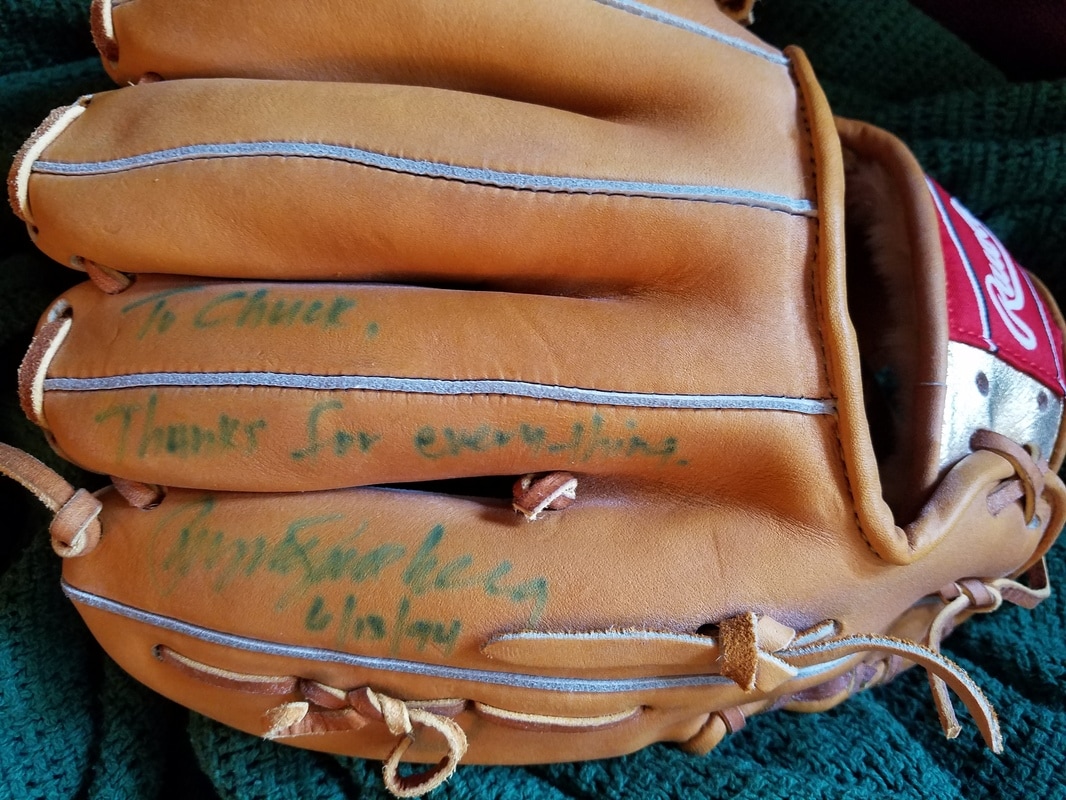
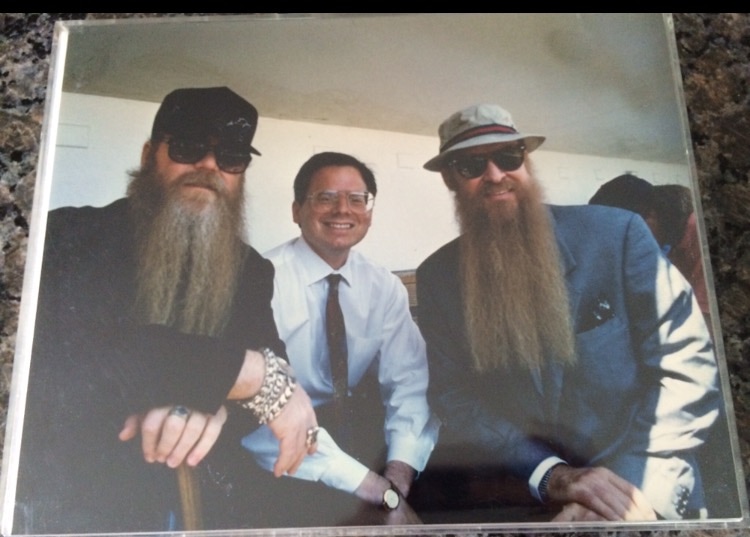
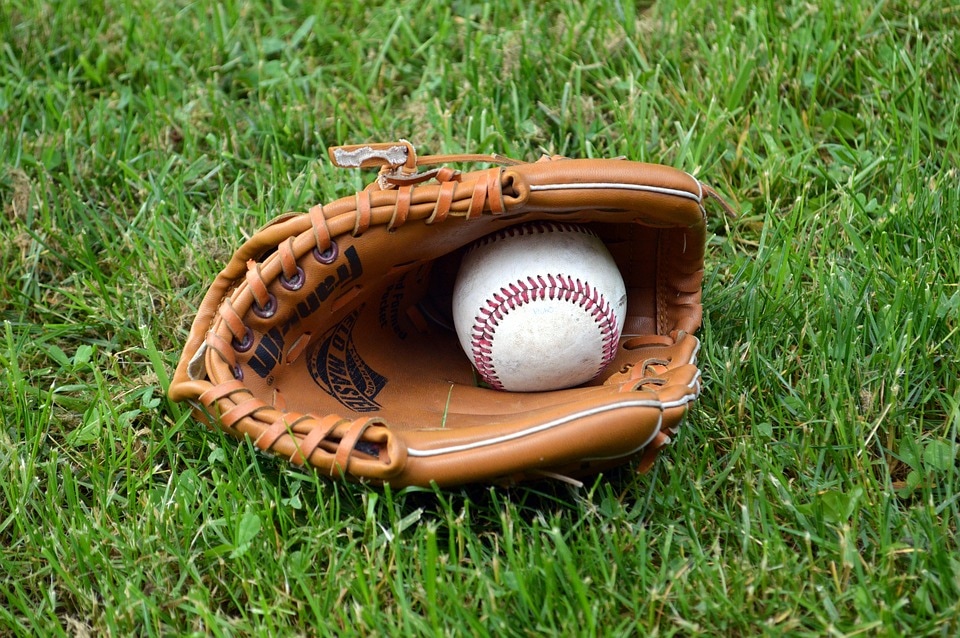
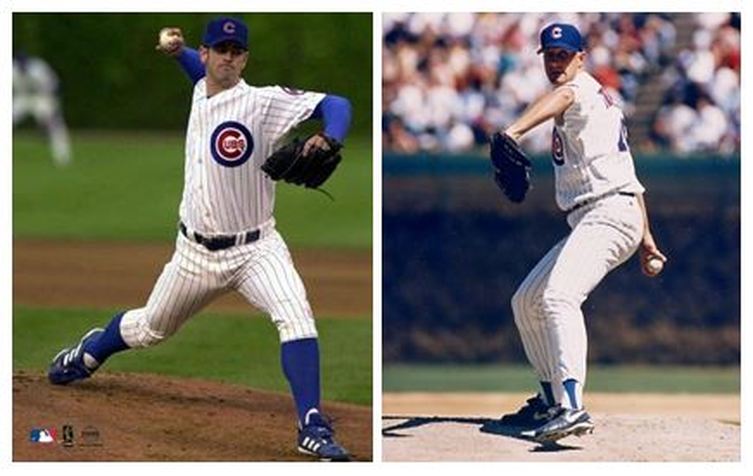
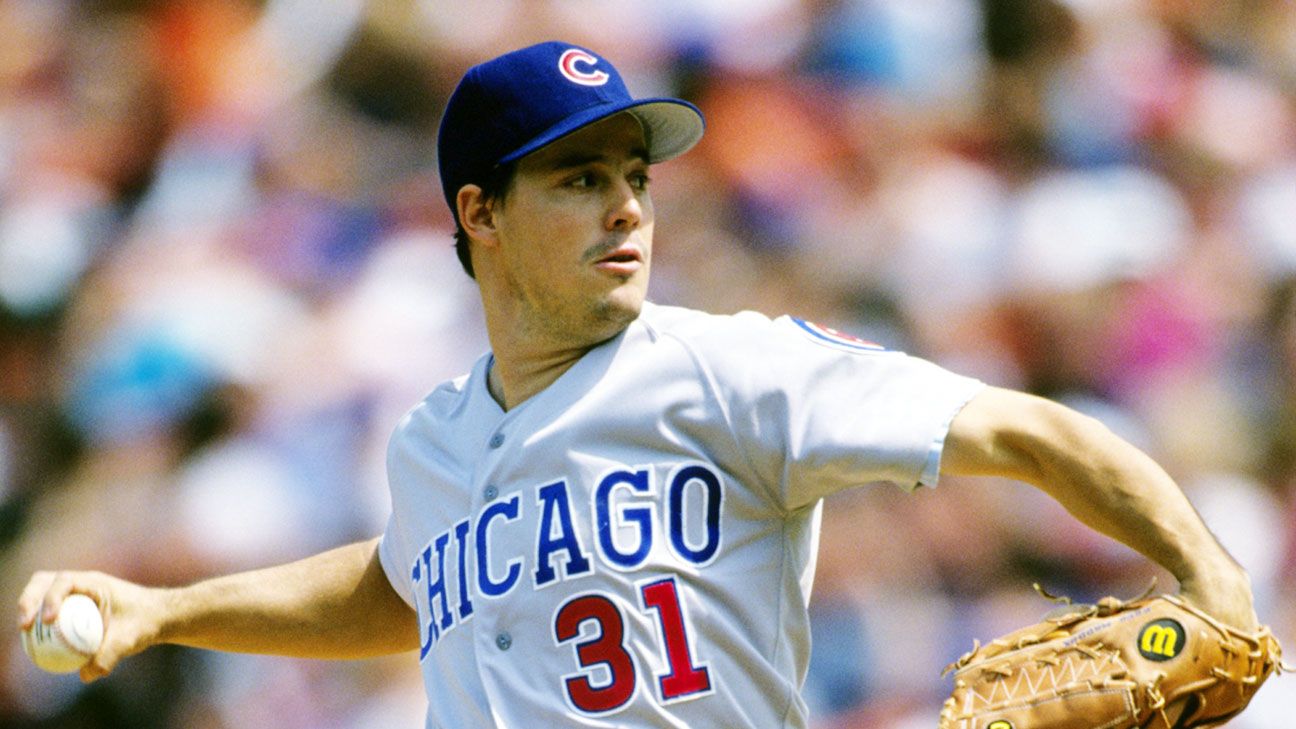
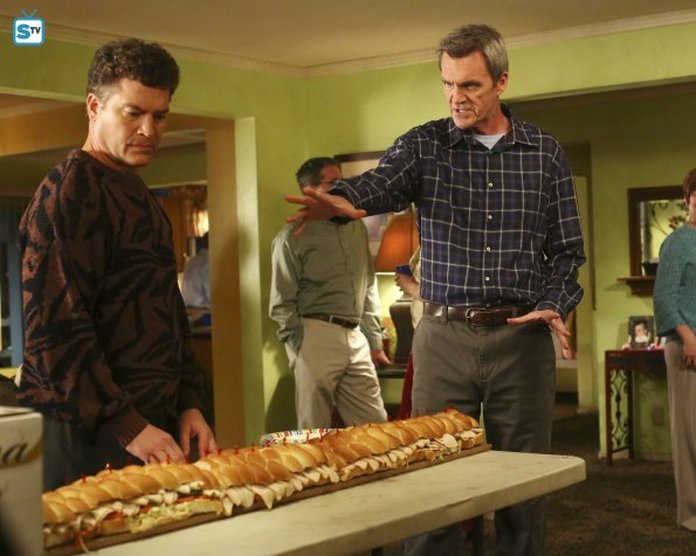
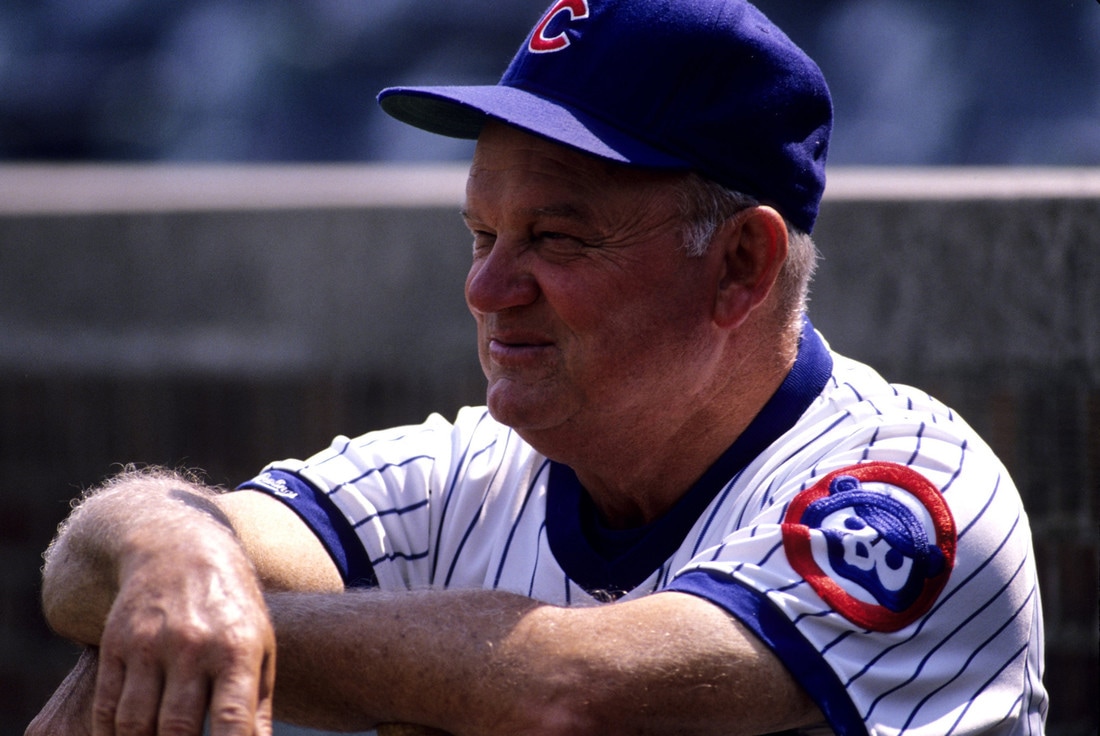
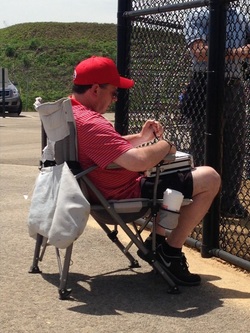
 RSS Feed
RSS Feed